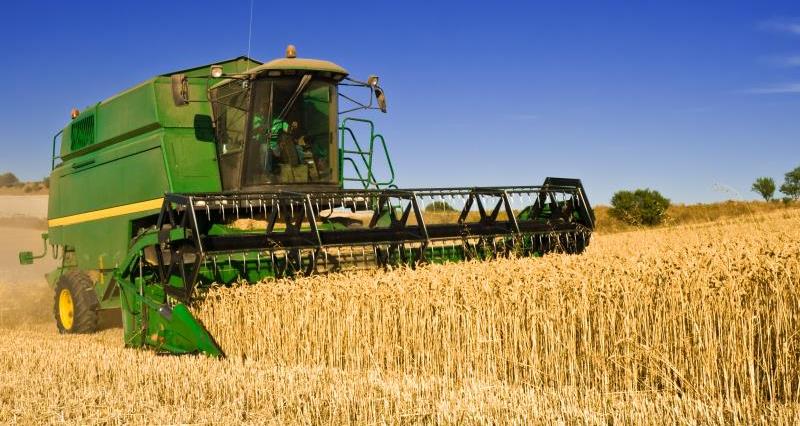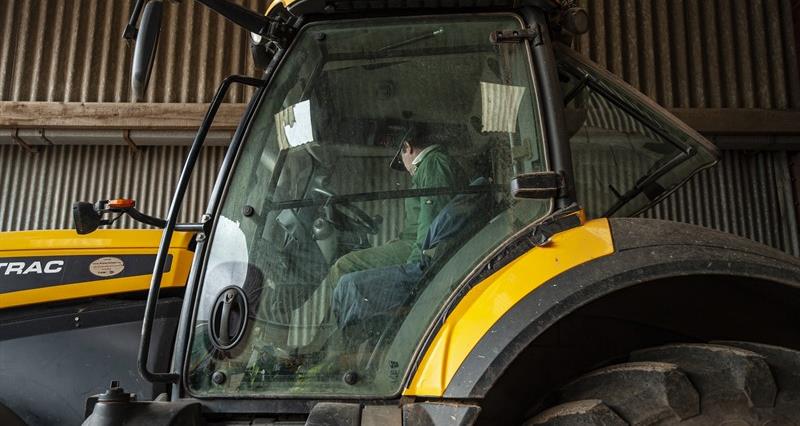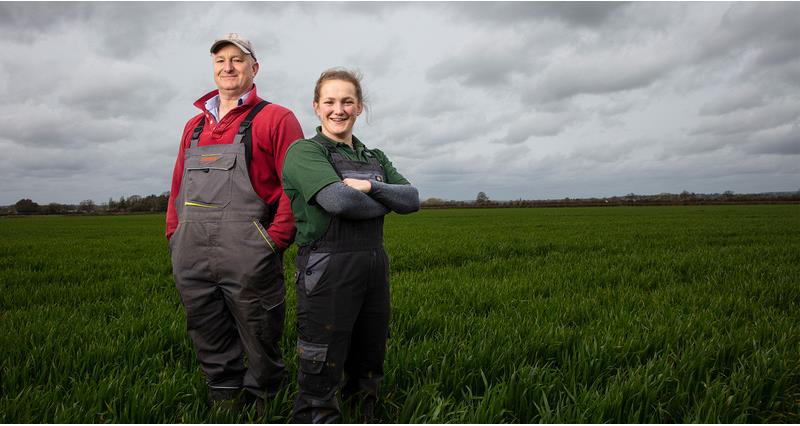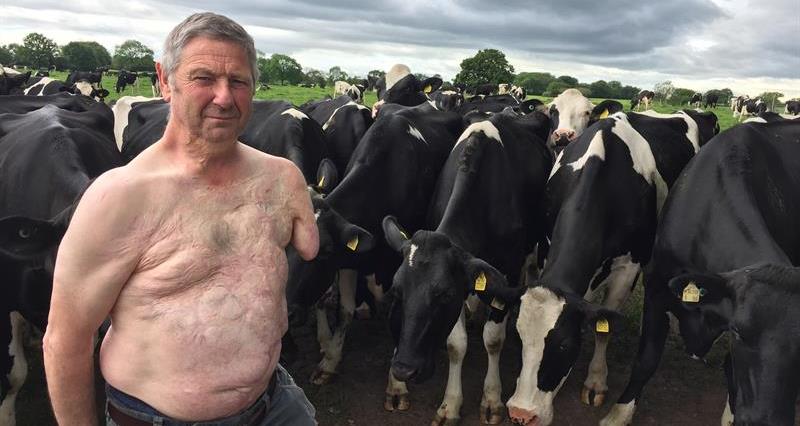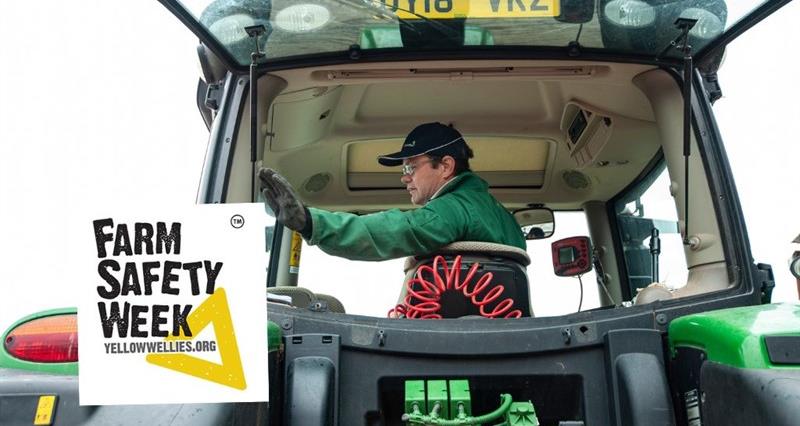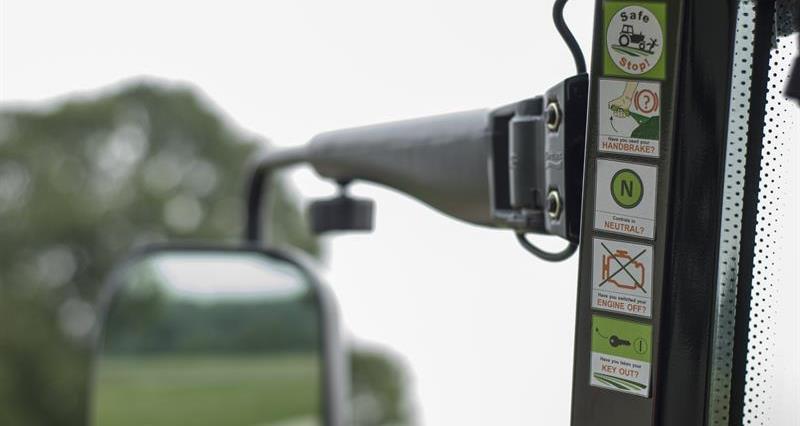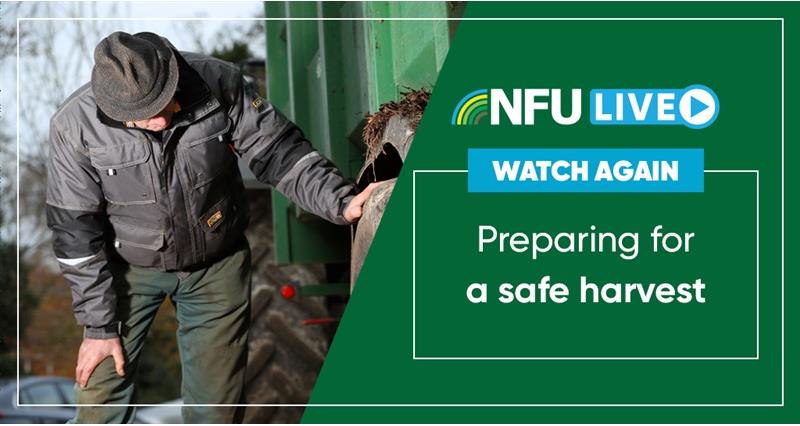
Safety in transport
Maintenance
Remember to ensure that your tractors and trailers are road worthy. You can download and print our general trailed appliance health check and vehicle health check to help you ensure that your vehicles are in sound condition. In particular, make sure the brakes on your trailer are adjusted are working correctly and efficiently.
Many accidents happen when tractors and trailers turn right. Make sure indicators on the tractor (and on the trailer or implement when required) are in good working order and can clearly be seen. If a large queue forms behind the tractor, pull over whenever it is reasonable and safe to do so to let the traffic pass.
See: Transport and machinery safety – the importance of maintenance.
Maintenance of hitches is key to towing effectively. For more information, visit: Agricultural trailer couplings – importance of maintenance.
Towing header trailers
If a two wheeled header trailer is towed behind a combine there are braking requirements linked to the weight of the trailer as follows:
- Two wheeled header trailers with a max unladen weight of up to 510kg – no braking requirements.
- Two wheeled trailers over 750kg max laden weigh up to 3.5t max laden weight – overrun brakes are required.
- Two wheeled trailer over 3.5t max laden weight up to a max laden weight of 14.23t – requirement that brakes can be operated by the driver from the driving seat of the towing vehicle whilst remaining in control of the towing vehicle.
If a header trailer is towed behind a tractor the following braking requirements apply:
- 750kg max laden weigh up to 3.5t max laden weight – overrun brakes are required.
- Over 3.5t max laden weight up to a max laden weight of 14.23t – requirement that brakes can be operated by the driver from the driving seat of the towing vehicle whilst remaining in control of the towing vehicle.
- Over 14.23t - requirement that brakes are operated directly from the service brakes of the towing vehicle.
Speed limits
The maximum speed limit for most conventional tractors is 25mph. Only JCB Fastrac and Unimog vehicles are built to the specification demanded by law to legally travel at speeds over 25mph.
It is important to remember as well that the speed limit of 25mph only applies to vehicles up to a maximum vehicle width of 2.55m. The speed limit for tractors over 2.55m width is 20mph.
The limit for tractors and other farm vehicles over 3.50m is 12mph. This applies to Fastrac and Unimog vehicles as well as all other conventional tractors over 2.55m.
More information is available in the NFU Business Guide on vehicle dimensions.
Weights
The weight limit for all tractor and trailer combinations on UK roads is 31t. Within the overall combination weight limit of 31t there is a specific limit on the weight of a laden trailer. By law, a trailer can be no more than 18.29t. This is the gross weight limit – that is the weight of the trailer and the load it carries.
Wide load movements on road
The police must be notified at least 24 hours in advance when vehicles over 3m in width are moved on road when:
- there is a speed limit of 40mph or less, or
- the length of the journey exceeds 5 miles.
Most forces operate an annual dispensation scheme where the relevant force is notified once with details of the vehicles concerned and areas of operation. If the police are satisfied with the information supplied they will issue a dispensation for the rest of the year, which takes away the need for 24 hours’ notice each time a vehicle is moved.
A copy of the dispensation must be carried in the cab of every vehicle to which it applies. Care must be taken to note any restrictions imposed by the police on vehicle movements when the dispensation is issued. Contact your local abnormal loads officer to obtain a wide vehicle movement dispensation.
Escort vehicles
Escorts are required when vehicles over 3.5m are moved on road.
Escort vehicles are required to:
- have two beacons, one on each side of the vehicle roof, or a bar beacon that stretches the full width of the vehicle roof.
- be clearly identifiable as an escort vehicle, for example having clear wording and chevrons on the front and rear of the vehicle.
- have two-way communications between the escort vehicle and the escorted vehicle. CB radios are the acceptable form.
- the escort vehicle driver must wear a long sleeved hi-vis jacket or vest.
Driver age
Driver age limits and licence requirements differ according to the type of agricultural machine driven.
It is important to note that combine harvesters are classed as agricultural engines and that there are weight restrictions according to age which prevent persons under the age of 21 years from driving them.
See: Driving licence requirements for agricultural vehicles
|
Vehicle |
Driving license requirement |
Min age |
Restrictions |
|
Agricultural tractor |
F category |
16 |
Drivers between the ages of 16 and 17 years are restricted to vehicles no more than 2.45m wide |
|
Agricultural tractor |
B category |
17 |
|
|
Agricultural engine e.g. combine, sprayer, telehandler |
B category |
17 |
Vehicle weight limits apply according to age:
|
|
Agricultural engine e.g. combine, sprayer, telehandler with a trailer over 750kg |
B category |
17 |
Vehicle weight limits apply according to age:
|
|
Tracked vehicle steered by its tracks |
H category |
21 |
Age 17 if the maximum authorised mass of the vehicle does not exceed 3.5t |
|
Tracked vehicle not steered by its tracks |
B category |
17 |
Vehicle weight limits apply according to age:
|
Amber beacons
Use is obligatory on all agricultural vehicles with a maximum speed of 25mph or less when using a dual carriageway with a speed limit of over 50 mph. Amber beacons can also be used by escort vehicles or to warn other road users of the presence of a slow moving vehicle.
Beacons must be:
- at least 1.2m high from the ground to the centre of the light.
- at least one visible from every point around the agricultural vehicle/machine and if relevant the load being moved. Use additional beacons if there are any points where the beacons are not visible.
- of a position and type that cannot be confused with any other lighting system.
Read: Transport rules – coroner’s beacon warning.
Children
It is against the law for children under the age of 13 to drive or ride on any agricultural machine. There are tight restrictions on the type of machinery children over the age of 13 can use. Young children should only visit the farm work place if under the close control and supervision of an adult not engaged in work activities.
See: What’s the law on children driving agricultural machines?
The HSE has further information: Preventing accidents to children on farm
Non-UK drivers
A driving licence issued by an EU member state is recognised in the UK. An EU citizen with a licence issued by their home country can drive vehicles listed on the licence issued in their home state of the equivalent UK category in the UK as long as:
- the license is valid.
- the person is old enough to drive a vehicle of the equivalent UK category.
- the license has not been suspended, restricted or revoked in the issuing country.
For more information and descriptions of licences issued by EU member states and the UK government see:
- EU member states information on driving licence models
- UK Government information on driving in Great Britain on a non-GB licence
Mobile phones
Mobile phones are a cause of driver distraction and accidents. The use of handheld mobile devices whilst driving is against the law. Fines of up to £200 and 6 penalty points apply. Hand held devices should not be used.
If use of a mobile phone is required, ensure the vehicle is safely pulled over and the engine is immobilised before use.
Considerate driving
Harvest will see an increase in the volume of larger, slower moving vehicles on road with the risk that tailbacks of traffic could occur.
Rule 169 of the Highway Code says: ‘Do not hold up a long queue of traffic, especially if you are driving a large or slow-moving vehicle. Check your mirrors frequently, and if necessary, pull in where it is safe and let traffic pass.’
Failure to pull over when there is a long queue of traffic can constitute an offence of inconsiderate driving with a fine of up to £5,000 and between three and nine penalty points.
Only pull in when it is safe and avoid doing so in such a way that forces vehicles behind you on to the opposite carriage way.
Load security
Loads must be secured in a way that ensures the use of the vehicle or trailer transporting the load does not involve a risk of danger or injury to any person.
Loads must also be secured, if necessary by physical restraint other than its own weight, and be in such a position, that neither danger nor nuisance is likely to be caused to any person or property by reason of the load, or any part of it falling or being blown from the vehicle or by any other movement of the load.
In order to comply with these legal requirements, individuals should carry out a risk assessment and take appropriate steps to ensure that the load does not present a risk of danger or nuisance to others. This includes considering whether a load needs to be sheeted, or otherwise restrained, in order to be secure.
More guidance on load security is available at: GOV.UK | Securing loads on HGVs and goods vehicles
It’s import to ensure you’re aware of this guidance and take it into account when making decisions regarding load security.
Read: Transporting vehicle loads safely – guidance on the rules
Other safety tips
Accidents can happen at any time, whether you are under stress to get the job done or undertaking a routine task. Shortcuts can lead to accidents so it is important to take a moment to think about the risks and mitigate them before the work commences.
Employees
If you have employees, make sure they are all aware of how to use equipment and undertake tasks safely. They should also know what to do in the case of occurrences such as breakdowns and blockages. It’s easy to get caught up in the buzz of harvest, so make sure that they know to put their safety and that of their colleagues first.
Make sure that your employees also get sufficient rest when working during harvest to ensure that they remain alert and aware of possible risks.
Safe Stop
Remember to follow the Safe Stop procedure every time you get out of the cab of your vehicle:
- Engage the handbrake
- Put the controls in neutral
- Switch off your engine
- Remove your key from the vehicle
Rest periods
Harvest is an incredibly busy time for all arable farmers who often work long hours to get the job done. However, it is also important that all workers on farm have sufficient rest periods to help them stay alert, stay safe and get work done efficiently. Find out more about the minimum rest periods set out in the Working Time Regulations in the NFU briefing on working hours during harvest.
